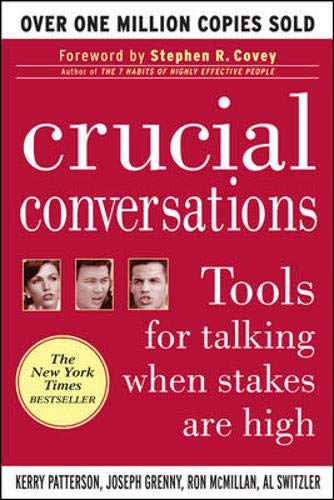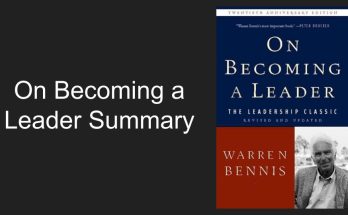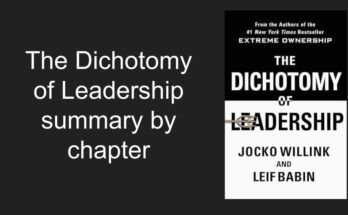Crucial conversations summary includes a detailed summary of the book and some practical tips shared in the book.
Crucial conversations – tools for talking when stakes are high by Kerry Patterson, Joseph Grenny, Ron McMillan, and Al Switzler are leaders in organization effectiveness consulting and founders of VitalSmarts.
They provide tools for having an honest and open dialogue between the individuals, and we know open communication is the basis of organizational learning and development.
Dialogue impacts your personal and professional life, so improving the quality of your dialogue enhances the quality of your life.
Your conversation majorly impacts the quality of relationships you have, and you need to do more than just listen and talk. In crucial conversations, summary will enlist tools, processes, and methods to improve conversation when stakes are high.
What are the takeaways from the crucial conversation summary?
In the crucial conversations summary you will learn:
- Why should you buy this book?
- What’s a Crucial Conversation?
- How to master Crucial Conversations?
- Start with Heart
- Learn to Look
- Make It Safe
- Master My Stories
- Explore Others’ Paths
- Move to Action
- Summing up All together
- Who should buy this book?
Why should you read this book?
The crucial conversations book is the result of 25 years of research of more than 20,000 participants and more than 100 organizations. So the tools shared here are tried and tested.
Buy this book, and you will learn how to have crucial conversations and lead such conversations to win-win situations, how to overcome the discomfort of crucial conversations and more.
- Proven techniques to prepare yourself for crucial conversations
- How can you transform your anger and negative feelings into robust dialogue?
- How to make people around you feel safe to talk about almost anything?
- How to use new techniques, tools and processes shared in the book?
That being shared, let’s dive into the details of the crucial conversations summary.
What’s a Crucial Conversation?
A crucial conversation is a conversation where emotions are strong, stakes are high, and have differences of opinion.
People who can talk in high-stakes situations tend to succeed in personal and professional life and have better relationships with others.
If the high-stakes conversations are not handled properly, the results are devastating and can negatively impact the organization.
People who master skills of crucial conversations
People who master skills of crucial conversations get work done from others simultaneously, build relationships, and are most influential in their career.
They can also convey controversial messages clearly to bosses, direct reports, and peers. As they have mastered the skill of crucial conversations, others are not defensive or angry about it.
Improve your and your organization health
The best organizations know the impact of open communication and crucial conversations, where people can hold each other accountable and productivity increases to the roof.
It creates a culture of openness and trust in the organization that can improve its health.
If you can have crucial conversations properly, you can get rid of any negative feelings by communicating about them clearly. As a result, it can help you feel more accessible and improve your health.

How to master Crucial Conversations?
Dialogue and conversations are a free flow of ideas between people. When people are in conversation, they bring their feelings, emotions, opinions, behavior, and views. This creates a pool of information, and it can affect the action of others.
If you go by definition, there are opinions at the discussion in crucial conversations, not a pool of meaningful ideas.
So there are two ways one can master the crucial conversations.
- Filling the pool of shared meaning
- Better choices
As we saw earlier, people bring their share of emotions, facts, opinions, and facts to the discussion, creating a pool of shared meaning. To master the skill of crucial conversation, you must create this pool of shared meaning.
The person with skillful dialogue does his best to make it safe for everyone to share their ideas with the pool. These ideas may be wrong, controversial, and irrelevant, but they shall be contributing to the pool of shared meaning.
Accepting every idea, suggestion, and opinion does not mean you have to work on them. On the contrary, you aim to create shared understanding in a team and keep it safe for everyone at this level.
The pool of shared meaning will grow as everyone feels safe and open to sharing the information. This pool of shared meaning is technically group IQ.
As the pool gets more extensive, relevant information and facts are gathered, team members start to think from each other’s perspectives and increase the team’s accountability.
Imagine the opposite if people do not share the information with the team, impacting decision-making and overall organization.
2. Better Choices
Once the shared pool of meaning is created, you get better choices to make decisions. In addition, these decisions will have more acceptance with the team as they now know their contribution to the decision.
When the ideas are shared freely, and team members are free & safe to contribute, they understand the solution provided is the best solution and feel more committed to it.
On the other hand, when team members are not involved and do not feel contributing to the decision, they may not accept the decision or commit to it.
So it is crucial to create a pool of shared meaning, allow everyone to share, accept all the information, and make better decisions. But, since they are not heard or permitted to share their ideas, they resist the solution.

To create a pool of shared meaning, you must make sure to create a safe environment for team members to speak up.
Creating a pool of shared meaning is a better investment and yields faster actions on the part of team members. It’s better to have a team to contribute to decisions rather than convincing them on new decisions.
Start with Heart
The question is, how do you get shared meaning from team members while facing counter-argument, differences of opinion, and intense emotions?
It takes effort and dedication to change people, but how can you make people listen to you in the first place?
In a crucial conversation summary, we will see the first principle to start the dialogue: start with the heart. It simply means start with yourself first. To have a better conversation, first, you need to set your heart right.
If you can’t set yourself right first, free from debating, arguing, and demotivating others, you can’t have effective dialogue.
Work on me first.
The only person you can change is the person in the mirror, and right you are the only person on the planet under your control who can change as the need arises.
People who are good at dialogue understand this simple rule and work on themselves to improve their crucial conversation with others.
Stay Focused
Stay focused on what you want out of conversation no matter what happens, and it will make you better at holding dialogue.
You have worked on setting your heart right, you start the conversation with the right intention, and staying focused will help you steer the conversation the way you want.
Refocus your brain
One may argue how you can focus on goals when you have a hot argument in the discussion?
Point well taken. The only way to do that is to dissociate yourself from the conversation and try to see the conversation as an outsider.
Once you can dissociate yourself and see it as an outsider, you can refocus your brain to what you want instead of going back to a hot discussion.
Return to the dialogue
You can ask yourself the following questions and go back to dialogue.
- What do I really want for myself?
- How would I behave if I really wanted these results?
- What do I really want for the relationship?
- What do I really want for others?
Learn to look
If your team does not feel safe enough to contribute to a shared pool of meaning, they become silent or violent in conversation.

Silence is when team members are not contributing to the pool, and violence means team members are forcing their way to the pool. Both are ineffective and lead to hot, crucial conversations.
Look for your style under stress.
When we get into a crucial conversation, everything is happening so fast that we roll back to the old way of handling conversation, and this happens in stressful conversations where stakes are high.
You can break this cycle by looking for your style and doing the following:
- Look when things become crucial
- Learn the difference between content and condition.
- Watch out for safety problems
- Look for the point where you can lose control.
Make it safe
As we saw earlier, when team members do not feel safe in the conversation, they become violent or silent.
To avoid that and move conversations towards a shared pool of meaning, it is your responsibility to make conversation safe again.
In a crucial conversations summary, let me share some of the tools you can use to make conversations safe again.
Apologize when appropriate
If you have made a mistake and it has caused problems to others, just apologize with a genuine heart.
When leaders apologize for their mistakes openly, it creates an environment of an open and accessible culture where one can accept their mistakes and learn from them.
Use contrast to fix the misunderstanding.
Sometimes people can feel disrespected even though you may not have done anything like that, and you may not need to apologize for what you have not done.
However, to make it safe again, move out of the discussion or argument and rebuild safety with contrasting.
In contrast, confirm if there are concerns about your intention and you being disrespectful and clarify that to the team.
You need to clarify your intention to the team and show that you respect them and their opinion to fix misunderstandings.
If misunderstanding is not fixed, team members may go back to silent or violent communication.
Use CRIB to get Mutual Purpose

When there is cross-purpose conflict in conversation, you step out of content about who thinks what and apply CRIB to get Mutual Purpose.
Commit to seek Mutual Purpose
Come up with something that serves everyone’s purpose. Then, stay in the conversation until you achieve it.
Recognize the purpose behind the strategy.
Understand what team members need in the conflict and separate what they are asking from the purpose it serves.
Invent a Mutual Purpose
Find a long-term and motivating purpose that everyone agrees with, and you need to invent mutual purpose after understanding your team members’ views.
Brainstorm new strategies
Brainstorm new strategies to find the mutual purpose that works for everyone.
Master my stories
In the dialogue, you are the one who is telling the story, and you have control over it. Make sure you do not mix your emotion with your story.
In the crucial conversations summary, we will see ways to master my stories.
Notice your behavior
If you find yourself moving away from the dialogue, ask yourself this question, “Am I moving towards silence or violence in this conversation?”
Get in touch with your feelings.
Ask yourself this question, “What feelings and emotions are making me behave this way?”
Analyze your story
Answer to this question “Are these emotions creating my story? If yes, how?”
Get back to the facts.
“Do I have any evidence to support my story?” find hard facts that support your story, or else you may need to change the story.
Watch for clever stories.
Clever stories are the one that gets you near to what you want from the conversations,
Remember, To have good dialogue in crucial conversations, you need a helpful story that leads to the action.
Explore others paths
Remember as a leader, and your role is to make conversation safe for your team member.
You can explore others paths to keep flow active in the shared pool and prevent your team members from going into silence or violence mode. You can use AMPP to restore safety and explore other paths.
Ask to get things rolling.
You can show genuine interest in your team members’ views.
Mirror to confirm the feelings.
Acknowledge the feeling of your team members when they share their views.
Paraphrase to acknowledge the story
As others tell their story, you can restate what you just heard in better words to confirm that you listen to their views.
Move to action
We have now created a pool of shared meaning and some of the information owned and agreed by team members, but it does not guarantee that you will make better decisions.
There are two significant reasons:
- First, they are poor performers on the decisions they make, so they are uncertain.
- They have different expectations and may not see decisions made serving them.
Crucial conversations are riskiest at the beginning, and in the end, the most challenging tasks are creating a pool of shared meaning and moving to action.
So even though you have all the details you need, you may not be able to make a decision that everyone agrees and accepts.
Remember, dialogue is not decision-making.
Don’t allow team members to assume that dialogue is decision-making from the beginning of the conversation.
You need to clarify their role in contributing to the pool of shared meaning and decisions based on shared information.
Make it clear how decisions will be made, who will decide, and why right from the beginning of the exercise.
Four methods of decision making
These four command methods to decision-making command, consult, vote, and consensus, use the one which will make your decision-making task easy for you.
Summing up crucial conversations summary
After 25 years of research and observing people at work and home, most people can succeed in crucial conversations by focusing on two principles.
To summarize crucial conversations summary let’s see these two principles in detail.
Learn to look and make it safe
To make change happen, people must learn to look whether they are in or out of dialogue or in silence or violence in conversation?
Having an awareness of this much can also help people change, as they can see where they are in conversation, so they can make an effort to change it.
Another critical principle is to make it safe for everyone in the team to contribute to a pool of shared meaning.
When you make it safe, all team members contribute, there is the flow of information, and everyone feels part of the process.
You can build safety by asking questions, apologizing when required, appreciating and acknowledging team members’ opinions and views.
Who should read this book?
Every person who is a people manager, Families that make decisions together, leaders handling large teams of managers should buy and read this book.
So we come to the end of a crucial conversations summary. Please let me know if you want me to cover any other book.
Read other book summaries like crucial conversations summary



